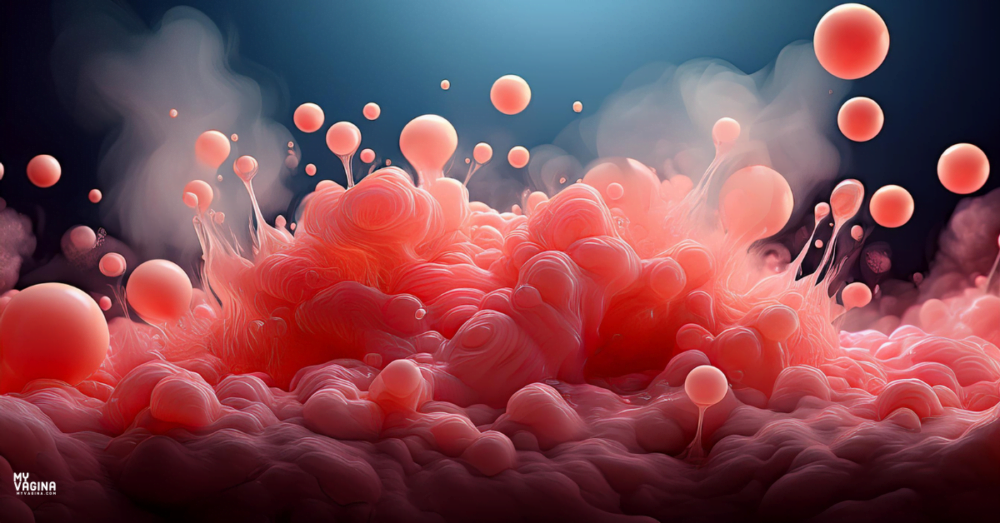Staphylococcal scalded skin syndrome (SSSS) is characterised by severe skin blisters with the outermost layer (epidermis) detaching. SSSS is the result of a toxin released by specific Staphylococcus aureus bacterial strains1.
The skin blisters as if scalded or burnt, and while this blistering can occur anywhere on the body, it can may appear on the vulva2.
SSSS may also be called Ritter von Ritterschein disease (Ritter disease), particularly when diagnosed in newborns.
It is mostly seen in children aged five or younger, with the age group most affected being ages 2-3. This age group is thought to be impacted the most due to an immature immune system (without protective antibodies against the exotoxins) and reduced renal toxin clearance.3
People who are older, immunocompromised or with renal impairment may also be affected. Males and females are affected equally.
How does Staph cause these symptoms?
The S. aureus involved in SSSS is toxigenic, accounting for around five per cent of strains. The bacteria produce two exotoxins – exfoliative toxins A and B.
The toxins bind to desmosomes – ‘staples’ that hold skin together – in the epidermis (desmoglein-1). Demoglein-1 keeps skin cells adhered to one another. In SSSS, desmoglein-1 proteins are degraded, causing skin cells to become ‘loose’ from one another, resulting in the loss of patches of the outer skin layer.
Severity varies significantly, from a small localised area to full body blistering. Mucosal surfaces are not affected (e.g. inside of the vagina and mouth) because mucosa does not contain desmoglein-1. This differentiation helps distinguish SSSS from toxic epidermal necrolysis (TEN).
Because of where Staph tends to reside, infections often start from ears, eyes, throat or infected wounds. The toxins then spread to the skin via blood circulation, which then targets the desmoglein-1 protein in other areas of the skin.
Symptoms of SSSS
- Lethargy
- Irritability
- Fever
- Within 24-48 hours, a painful widespread rash, followed by the formation of large, easily burst blisters filled with fluid (bullae)
- If ruptured, blisters leave tender patches of skin
SSSS rash characteristics
- Red
- Crinkled tissue or paper-like consistency
- Often starts on the face and areas with creases (groin, armpits, neck)
- Spreads rapidly to arms, legs and trunk
- Newborns may have lesions around the umbilical cord
- Skin redness, less obvious in darker skin tone
SSSS blister characteristics
- Most common in friction areas (armpits, groin, buttocks), central face and nose and ears
- Blisters contain fluid – cloudy or yellow pus
- Blisters burst easily, leaving the epidermis shedding in large sheets
- Gently rubbing skin results in skin peeling off (Nikolsky sign positive)
Diagnosis of SSSS
A practitioner will take a thorough health history and do a physical examination, which is typically enough for diagnosis. Tests might include microbial tests using skin swabs or blood tests, a Tzanck smear or a skin biopsy. SSSS on biopsy is characterised with non-inflammatory intraepidermal splitting at the granular layer.
Treatment of SSSS
Staphylococcal scalded skin syndrome (SSSS) is a dermatological emergency no matter where it appears on the body and requires prompt medical attention. It is unlikely to appear just on the vulva.
Treating SSSS usually includes intravenous antibiotics (such as flucloxacillin, ceftriaxone, clarithromycin, cefazolin, nafcillin or oxacillin. If the strain is methicillin-resistant, vancomycin.
If the response to intravenous antibiotics is positive, oral antibiotics can be introduced as a substitute within 2-3 days, allowing the patient to go home and continue treatment.
While recovering, pain relief may be required with over-the-counter drugs or, in severe pain, oral morphine. Monitoring the patient and providing fluids and electrolytes is important, particularly for young children with broad areas affected.
Taking care of skin during recovery from SSSS
Wash skin gently at least once daily with a soap substitute. Apply a greasy emollient, for example, a 50:50 white soft paraffin/liquid paraffin or Vaseline, to protect the skin and support healing. Burns dressings may be required.
Despite the initial alarming appearance of SSSS, children often make an excellent recovery, with complete healing usually occurring within 5–7 days of starting treatment.
Recovery from SSSS
Children diagnosed with SSSS typically fully recover within two weeks of diagnosis and effective treatment.
If left untreated or if treatment fails, complications may include scarring, dehydration, loss of fluids and electrolytes, kidney failure and secondary infections such as sepsis, cellulitis and pneumonia. Secondary complications are often due to the impaired skin barrier.
Adults may not fare as well due to the predisposition to complications overall.
What else mimics SSSS symptoms?
- Steven-Johnsons syndrome (SJS) (a.k.a. toxic epidermal necrolysis (TEN)
- Burns caused by heat
- Bullous impetigo4
- Drug hypersensitivity reaction
- Viral exanthem
References
- 1.Jordan KS. Staphylococcal Scalded Skin Syndrome. Advanced Emergency Nursing Journal. Published online April 2019:129-134. doi:10.1097/tme.0000000000000235
- 2.Turner MLC. Vulvar Manifestations of Systemic Diseases. Dermatologic Clinics. Published online April 1992:445-458. doi:10.1016/s0733-8635(18)30347-4
- 3.Handler MZ, Schwartz RA. Staphylococcal scalded skin syndrome: diagnosis and management in children and adults. Acad Dermatol Venereol. Published online May 20, 2014:1418-1423. doi:10.1111/jdv.12541
- 4.Brazel M, Desai A, Are A, Motaparthi K. Staphylococcal Scalded Skin Syndrome and Bullous Impetigo. Medicina. Published online October 24, 2021:1157. doi:10.3390/medicina57111157







